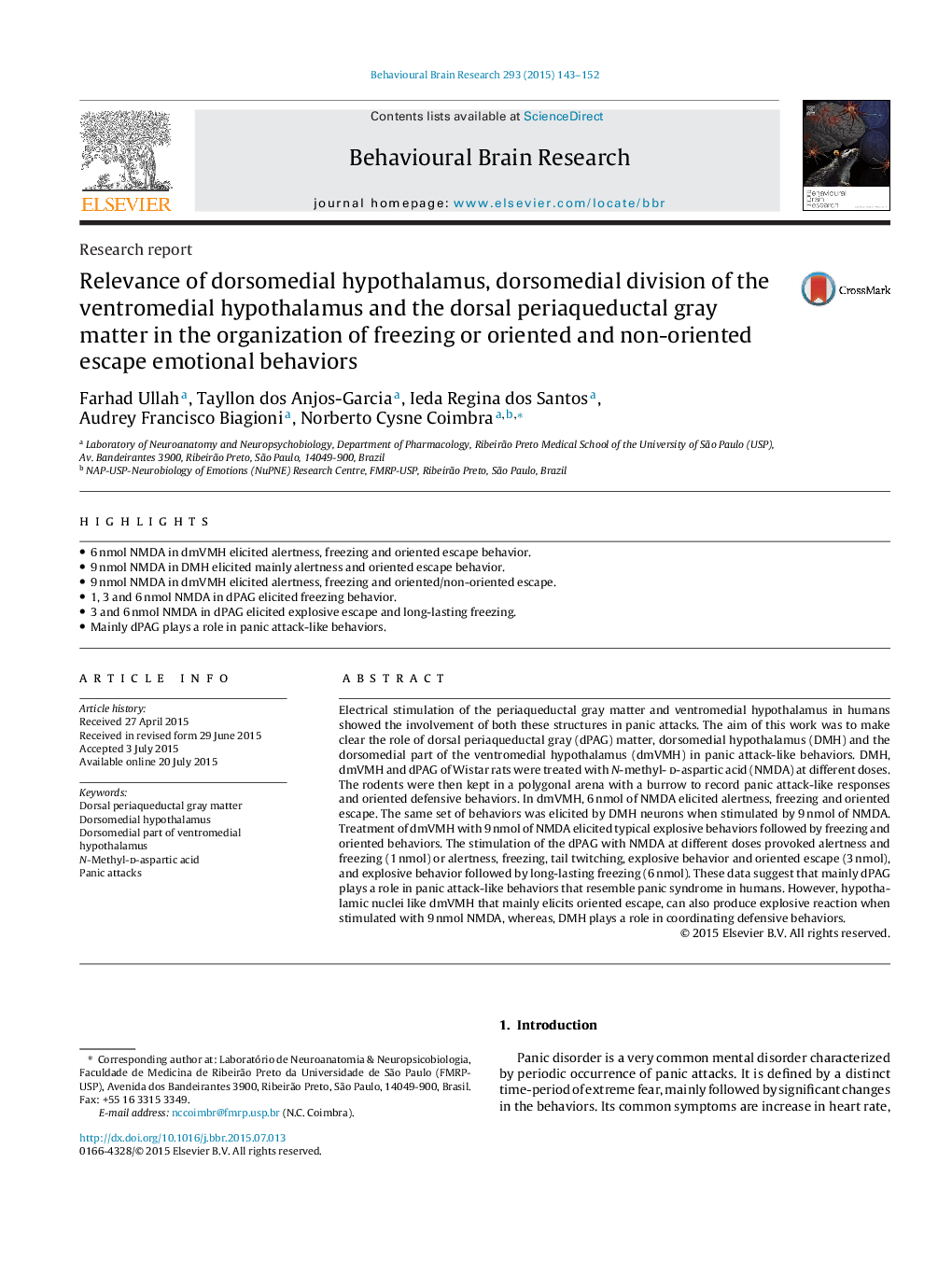| کد مقاله | کد نشریه | سال انتشار | مقاله انگلیسی | نسخه تمام متن |
|---|---|---|---|---|
| 6256614 | 1612939 | 2015 | 10 صفحه PDF | دانلود رایگان |
- 6Â nmol NMDA in dmVMH elicited alertness, freezing and oriented escape behavior.
- 9Â nmol NMDA in DMH elicited mainly alertness and oriented escape behavior.
- 9Â nmol NMDA in dmVMH elicited alertness, freezing and oriented/non-oriented escape.
- 1, 3 and 6Â nmol NMDA in dPAG elicited freezing behavior.
- 3 and 6Â nmol NMDA in dPAG elicited explosive escape and long-lasting freezing.
- Mainly dPAG plays a role in panic attack-like behaviors.
Electrical stimulation of the periaqueductal gray matter and ventromedial hypothalamus in humans showed the involvement of both these structures in panic attacks. The aim of this work was to make clear the role of dorsal periaqueductal gray (dPAG) matter, dorsomedial hypothalamus (DMH) and the dorsomedial part of the ventromedial hypothalamus (dmVMH) in panic attack-like behaviors. DMH, dmVMH and dPAG of Wistar rats were treated with N-methyl- d-aspartic acid (NMDA) at different doses. The rodents were then kept in a polygonal arena with a burrow to record panic attack-like responses and oriented defensive behaviors. In dmVMH, 6Â nmol of NMDA elicited alertness, freezing and oriented escape. The same set of behaviors was elicited by DMH neurons when stimulated by 9Â nmol of NMDA. Treatment of dmVMH with 9Â nmol of NMDA elicited typical explosive behaviors followed by freezing and oriented behaviors. The stimulation of the dPAG with NMDA at different doses provoked alertness and freezing (1Â nmol) or alertness, freezing, tail twitching, explosive behavior and oriented escape (3Â nmol), and explosive behavior followed by long-lasting freezing (6Â nmol). These data suggest that mainly dPAG plays a role in panic attack-like behaviors that resemble panic syndrome in humans. However, hypothalamic nuclei like dmVMH that mainly elicits oriented escape, can also produce explosive reaction when stimulated with 9Â nmol NMDA, whereas, DMH plays a role in coordinating defensive behaviors.
Journal: Behavioural Brain Research - Volume 293, 15 October 2015, Pages 143-152
